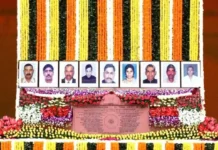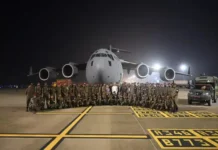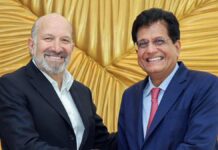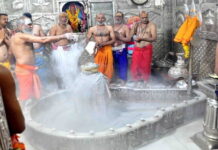 HYDERABAD: With Telangana all set to become a reality, major credit for keeping separation movement alive and kicking, particularly in the last decade, goes to TRS President K Chandrasekhar Rao, who could well be the political heavyweight in India’s 29th state.
HYDERABAD: With Telangana all set to become a reality, major credit for keeping separation movement alive and kicking, particularly in the last decade, goes to TRS President K Chandrasekhar Rao, who could well be the political heavyweight in India’s 29th state.
Though several leaders, including veteran M Channa Reddy, had tried to champion the cause of separate statehood for the region, it was KCR, as 60-year-old the TRS chief is popularly known, who gave it a major push, eventually leading to realization of a more than five-decade old dream.
The most potent weapon of Rao in reviving and taking the stir to national centre-stage is his fiery oration in typical Telangana lingo, which caught the imagination of the masses though his critics accuse him of being a rabble-rouser.
Rao was a TDP leader and Deputy Speaker of Andhra Pradesh Assembly till 2001, before he quit the party and launched the TRS to fight for separate Telangana.
Even die-hard supporters of separate Telangana did not expect him to do reasonably well with seasoned leaders around – N Chandrababu Naidu was Chief Minister then and an equally capable Y S Rajasekhara Reddy was leading Congress.
The separate Telangana cause was in a dormant state then, but he craftily built upon the goodwill for the cause with his articulation and a strategic mind.
With his acerbic criticism against leaders from Coastal Andhra and Rayalaseema (Seemandhra) and highlighting the alleged injustice meted out to Telangana in “integrated Andhra Pradesh”, he succeeded in striking a chord with the masses in the backward region which consists of 10 districts.
His speeches, delivered in a convincing style, mobilized the masses thanks to the proliferation of print and electronic media in Andhra Pradesh in the last one decade and made it “compulsory” for leaders of Congress and TDP from Telangana to endorse his stand.
His remarks like “Telangana waley jago, Andhra waley bhago” (Telangana people arise, run away Andhra people), warnings of a “civil war”, “bloodbath” made him controversial and he was, often, unsparing in his criticism of even Congress President Sonia Gandhi and Prime Minister Manmohan Singh.
Rao almost achieved his goal when the then Union Home Minister P Chidambaram announced in 2009 that Telangana State would be formed in the wake the former’s fast unto death.
The Centre, however, later changed its mind and called for more consultations following protests in Seemandhra.
Rao successfully steered agitations like “sakala jannuala samme” (strike by all sections of people) – lasting for over 40 days – that eventually made the Congress and Centre decide in favor of Telangana State. TRS allied with Congress for the 2004 elections and Rao became Union Labor Minister in UPA-I. The sub-regional party joined the Rajasekhara Reddy-led Congress Government in Andhra Pradesh though they had to quit subsequently.
Sharing power at the Centre and in the state hit his credibility as the Telangana demand was not conceded during UPA-I (2004-09) despite statehood issue being part of the common minimum program.
Rao joined hands with TDP and became part of a “grand alliance” against Congress in the 2009 elections. His party suffered a serious setback as it won only two Lok Sabha seats and 10 Assembly seats in the region.
With several TRS leaders gravitating towards Congress and the leadership of Rajasekhara Reddy, the party appeared to be in tatters.
TRS, however, rose from the ashes in the aftermath of Rajasekhara Reddy’s death in a chopper crash in September 2009.
After the Telangana Bill received nod from both Houses of Parliament this week, albeit amid unprecedented protests, he announced in Delhi yesterday that all Telugu-speaking people should live in harmony and he wished to see brotherly relations between the people of Telangana and Seemandhra. –PTI






